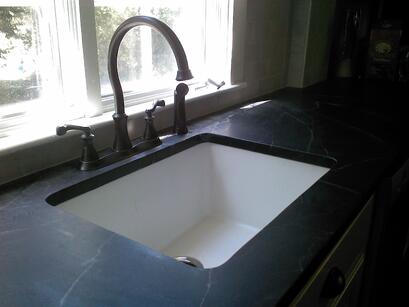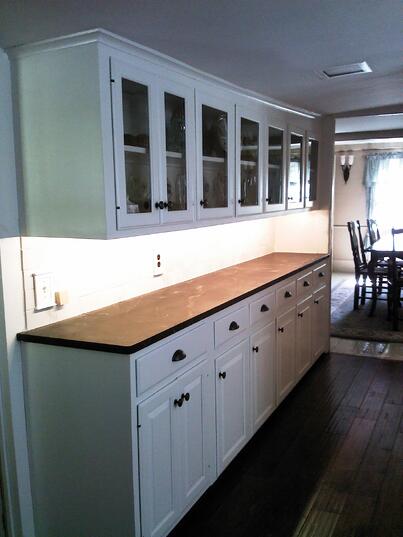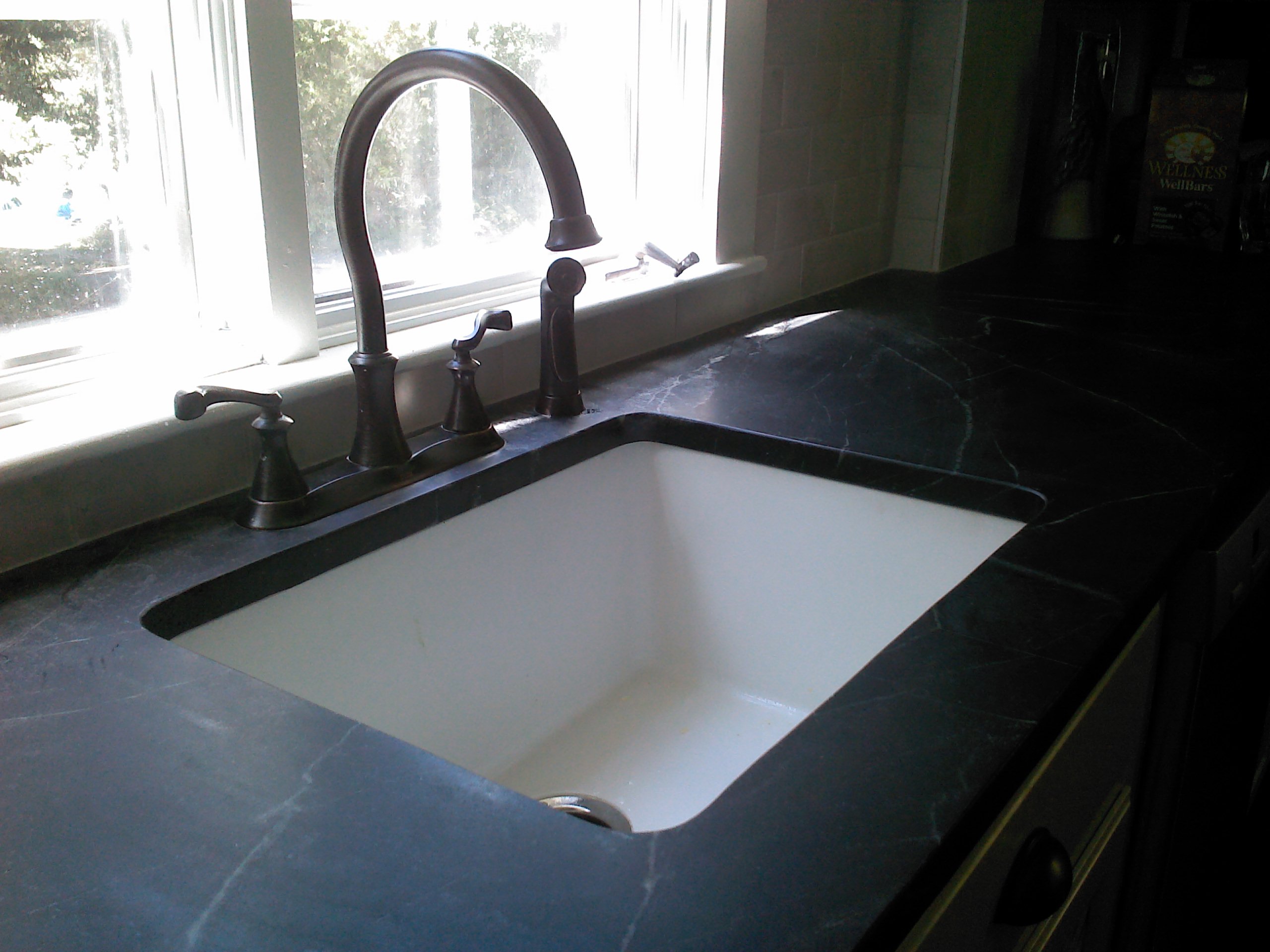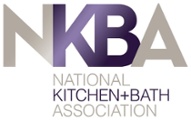What is Soapstone?
If you have an old home, or are trying to replicate one, soapstone kitchen countertops are a great option, providing traditional and timeless beauty. In use since the 19th century, soapstone is considered America's original countertop. Made of 60% - 80% talc, it is easily carved for countertops, sinks, stoves, mantels and other home products, such as cookware. Some slabs are quarried in Virginia and Vermont, but the majority of it comes from Brazil. This material was not considered an upscale material, it was used mostly in common areas and laundry rooms due to its indestructible nature. Here in the northeast, many people find soapstone sinks in their basements. Today, soapstone countertops are chosen for their old world elegance and charm.
 Oiled soapstone countertop with an undermount sink
Oiled soapstone countertop with an undermount sink
Properties:
Soapstones natural properties include being heat resistance, and impervious to scratches and chemicals. It has a smooth and soft feel, as opposed to the hard cold feel of granite countertops. More enjoyable to rest your elbows while drinking your morning coffee and reading the newspaper. Soap stone is also stain resistant, as it is a dense material. A soapstone sink will also hold in the heat from the water. Being impervious to acid, it also anti-bacterial. These properties are not inherent with granite, however, granite has been the popular choice for countertops over the last 15 years. Due to its softness, it unlikely to chip or crack. The surface is more forgiving than other natural stones.
Cost:
Compared to granite, soapstone is a more expensive option per square foot. Granite can start at $45 a square foot, with soapstone at $70 per square foot. The slab sizes of soapstone can be smaller, which may require your countertop to have more seams, or perhaps more material needs to be ordered. Those factors will affect the final price of your countertop. The slab we found for this project was 126" x 62". The seam was hidden behind the sink. The long stretch of countertop is seam free.

We spent time finding a slab long enough to avoid seams on this hutch piece.
Maintenance:
A regular application of a mineral oil wiping will add a protective coat, as well as adding luster and color to the stone. If you want to achieve the dark consistent black color, wipe it down with mineral oil. The white veining will "pop" against the natural black background color. Or you can leave it alone to slowly age naturally, patina, as you use it. The overall finish will remain matte, unlike polished granite.
Most scratches are removed by applying a coat of mineral oil. Larger scratches can be removed with steel wool.
For regular cleaning, use a mild dish soap for the counter and the sink.
Colors:
There are 2 colors available on the market, a green and a grey. Both turn black when oiled. It is always best to get a sample off the slab and test it out in your own home for durability and to see the final color, before it is fabricated for your countertop.
How to Replace your existing Countertop with Soapstone:
The template and installation process for soapstone is the same as granite. Read more here:
How to get Granite Kitchen Countertops
For more countertop options and information, download our free White paper today!







